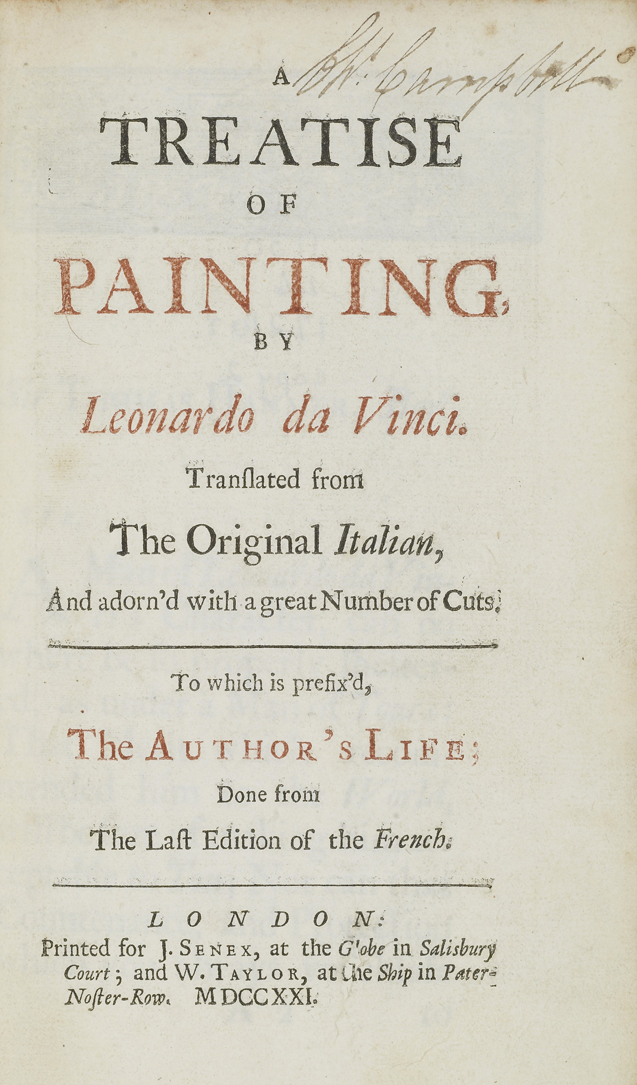
A Treatise on Painting, by Leonardo da Vinci
1721
Senex and Taylor, London
Illustrations:  | Chapter Display  |
I353
A Painting, though conducted with the greatest Art, and finished to the last Perfection, both with regard to its Contour, its Lights, its Shadows, and its Colours, will never show a Relievo, equal to that of the Natural Objects, unless these be view'd at a Distance, and with a single Eye; as may be thus Demonstrated. Suppose the two Eyes A B, viewing the Object C, at the Concourse of the two Central Lines, or visual Rays, A C, B C; [Tab. 2. Fig. 2.] In this Case, I say, that the Lines, or Sides of the visual Angle including those two Central Lines, will see the space G D, beyond, and behind the said Object; and the Eye A will see the Space F D, and the Eye B, the Space G E; so that the two Eyes will see, behind the Object C, the whole Space F E. By which Means that Object, C, becomes, as it were, transparent, according to the usual Definition of Transparency, which is that, beyond which, nothing is hidden. Now, this can never happen where the Object is only viewed with a single Eye; and where that Eye, is less in Extent than the Object which it views; whence, the Truth of our Proposition is fairly evinced; A painted Figure intercepting the whole space behind it; so that the Eye is precluded from the sight of any part of the Ground, found behind the Circumference of that Figure.